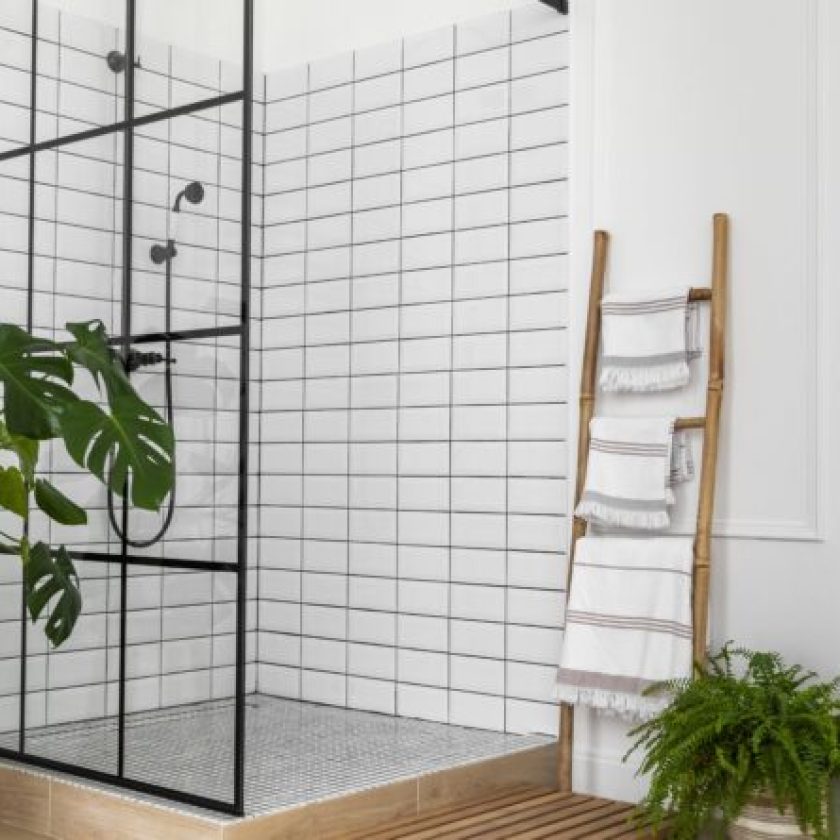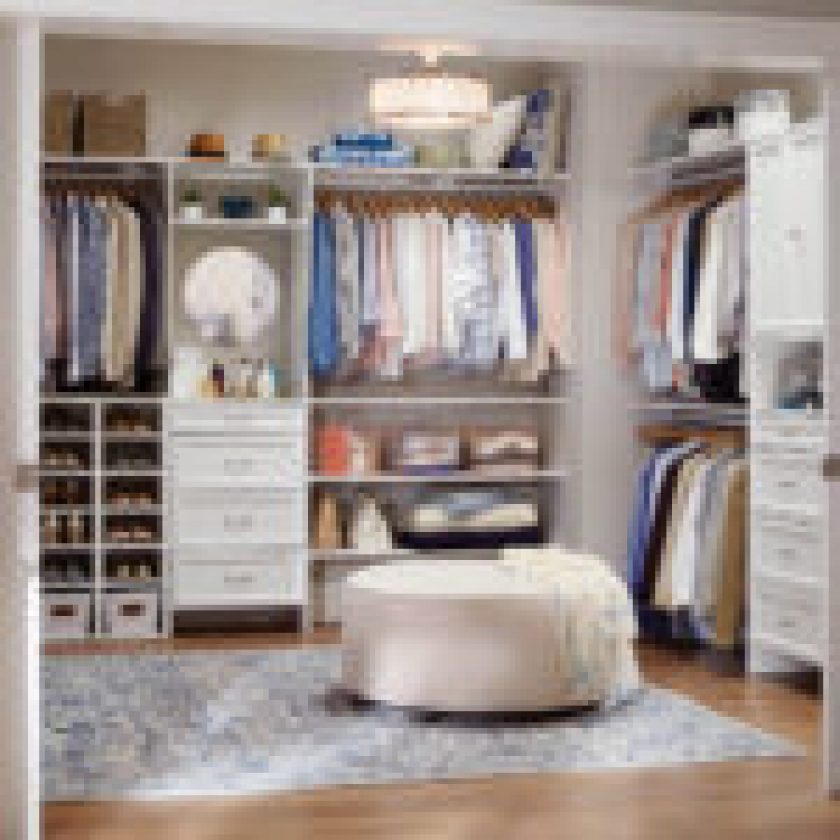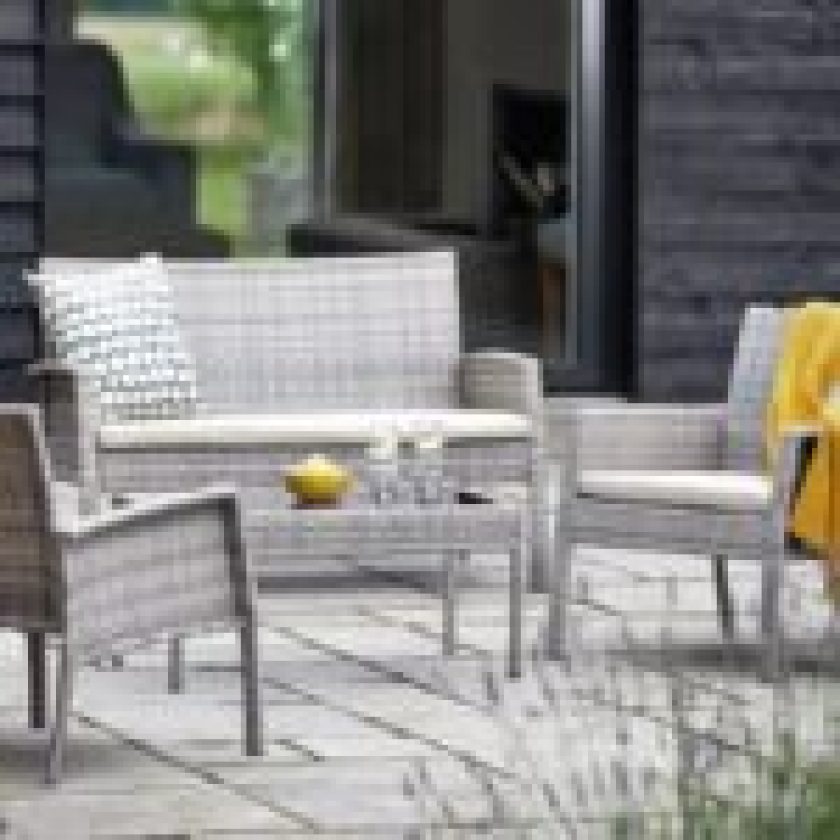Linear shower trays have become an essential feature in modern bathrooms, offering a sleek and functional alternative to traditional shower bases. Unlike conventional options, these trays are designed with a subtle slope that directs water to a linear drain, enhancing both form and function.
Linear shower trays are particularly popular in minimalist and contemporary designs due to their seamless integration with tiles and clean lines. Their versatility makes them an excellent choice for both new installations and bathroom renovations.
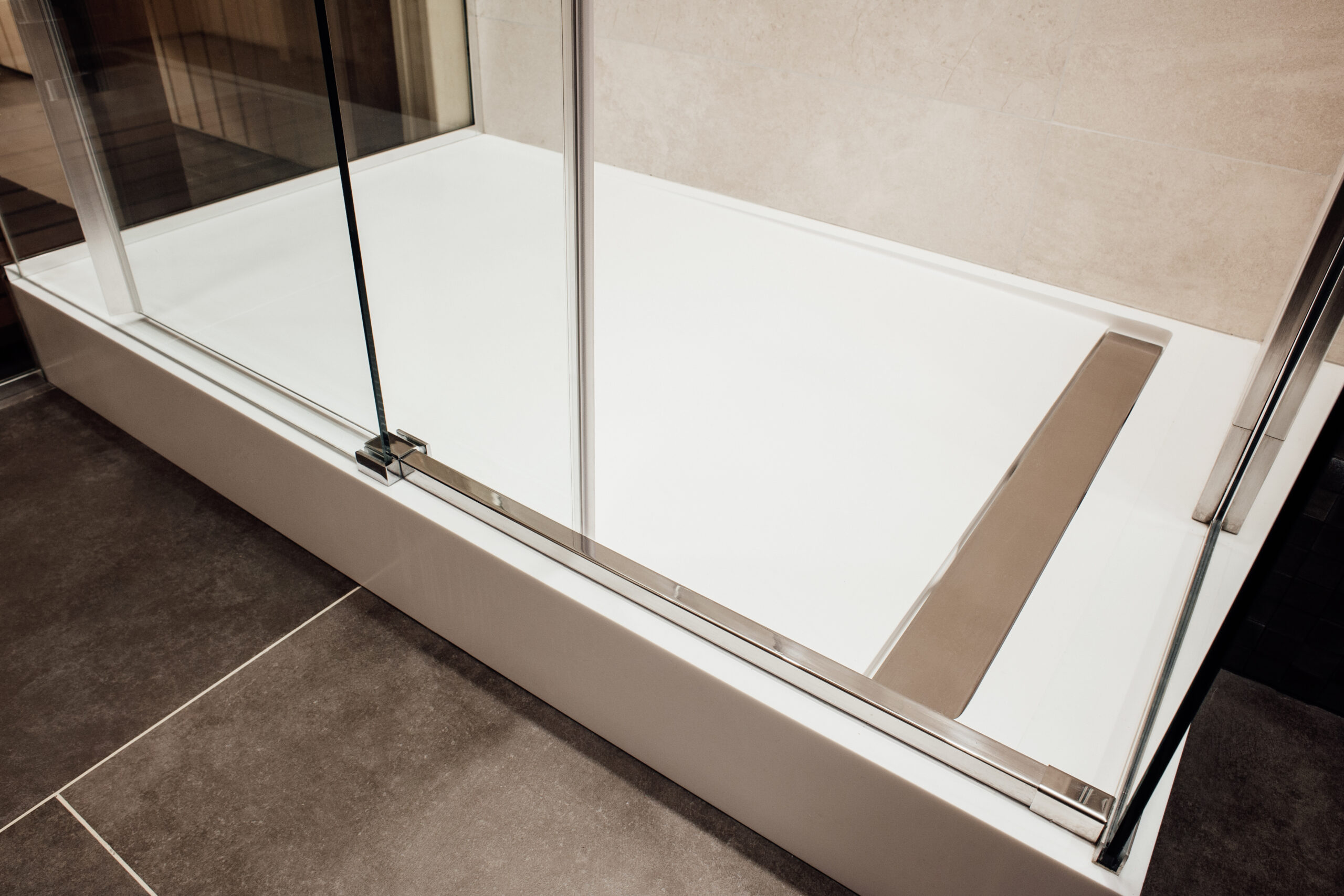
Benefits of Using Linear Shower Trays :
- Enhanced Bathroom Aesthetics – Linear shower trays create a streamlined and elegant look in bathrooms. The continuous tile surface enhances visual appeal, making spaces feel more open and less cluttered.
- Improved Drainage Efficiency – The pre-sloped design ensures efficient water drainage, reducing the risk of standing water and associated issues like mold or mildew.
- Increased Accessibility – These trays are ideal for barrier-free or curbless showers, promoting accessibility for individuals with mobility challenges while maintaining an upscale appearance.
Types of Linear Shower Trays :
- Prefabricated Polystyrene Sloped Trays – Prefabricated trays come with a built-in slope, making installation quicker and easier. These trays are lightweight yet durable, and their precision ensures proper water flow.
- Custom-Built Linear Trays – For unique bathroom layouts or specific design preferences, custom-built trays offer the flexibility to adapt to any space or size requirements.
- Waterproof Integrated Membrane Trays – These trays combine a sloped design with an integrated waterproofing membrane, providing an all-in-one solution for hassle-free installations.
Materials Used in Linear Shower Trays
- Expanded Polystyrene – This lightweight material forms the core of many prefabricated trays, offering durability and ease of handling during installation.
- Waterproofing Membranes – High-quality waterproof membranes are essential to prevent leaks and protect the underlying structure from water damage.
- Tileable Surfaces – Tileable linear shower trays allow for seamless integration with bathroom flooring, enabling a cohesive and customized design.
Key Features to Consider
- Pre-Sloped Design – The pre-sloped design eliminates the need for manual adjustments, ensuring proper water drainage and reducing installation time.
- Compatibility with Linear Drain Systems – Ensure the tray is compatible with your chosen linear drain to avoid complications during installation.
- Size and Dimensions – Select a tray size that fits your shower area and accommodates any specific design or accessibility requirements.
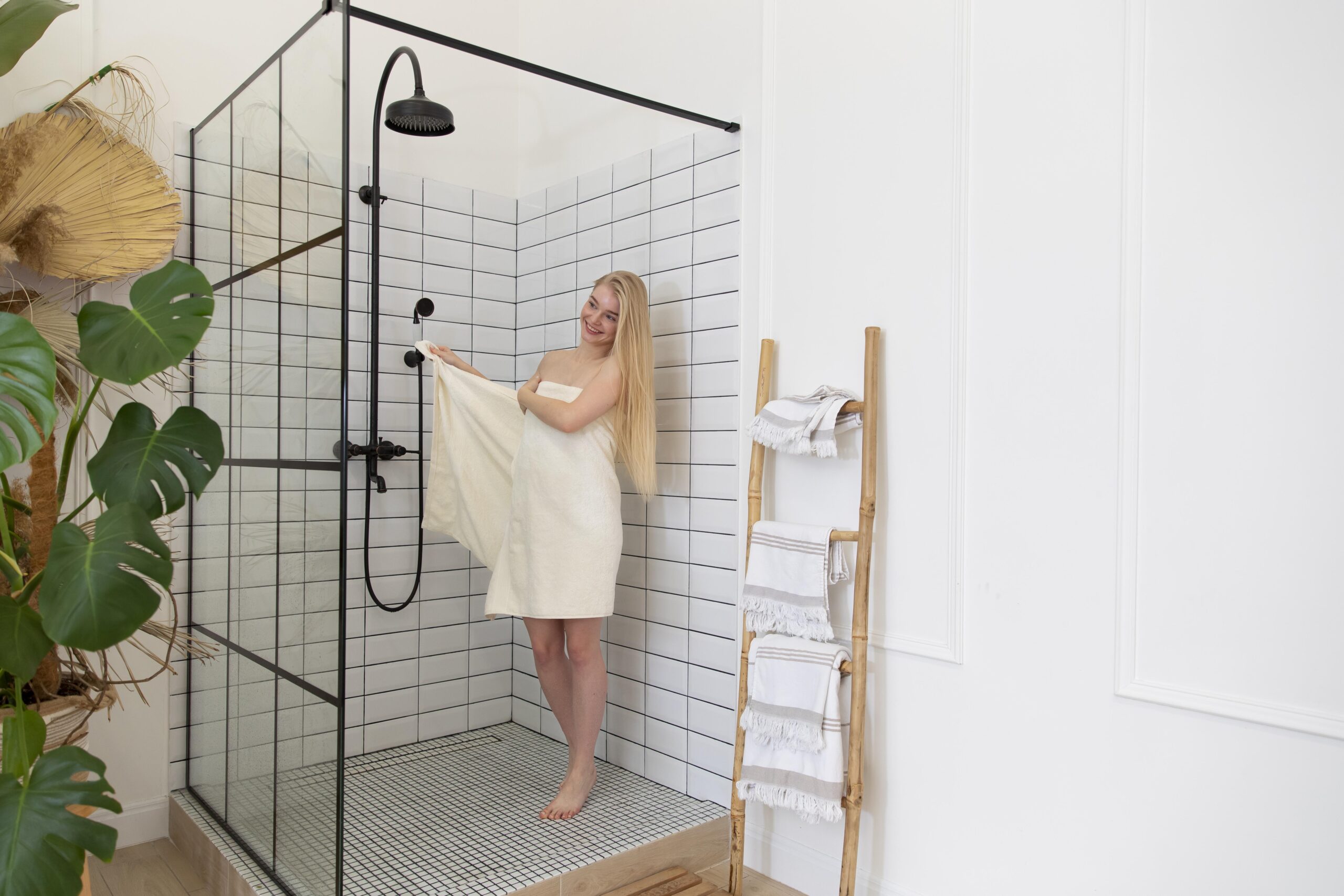
Popular Linear Shower Tray Products
- Schluter-KERDI-SHOWER-LT/-LTS Linear Shower Tray – Known for their durability and ease of installation, these trays are a top choice among professionals and DIY enthusiasts alike.
- All-in-One Waterproof Linear Shower Kits – These kits include everything needed for a complete installation, simplifying the process and ensuring compatibility among components.
Installation Process Overview :
- Preparing the Subfloor – Begin by ensuring the subfloor is clean, level, and free of debris to provide a solid foundation for the tray.
- Placing the Linear Shower Tray – Position the tray according to the design layout, ensuring it aligns with the drain placement.
- Installing the Linear Drain – Install the linear drain securely, following manufacturer guidelines to prevent leaks or misalignment.
- Applying Waterproofing Membranes – Cover the entire tray and adjoining surfaces with waterproofing membranes to create a watertight seal.
- Tiling the Shower Floor – Finish by tiling over the tray, taking care to maintain the slope toward the drain for optimal water flow.
Tools and Materials Needed for Installation
- Trowels and mixers for adhesive application
- Waterproofing membranes for sealing
- Tile cutters and spacers for precise tiling
Common Installation Mistakes to Avoid
- Incorrect Slope Alignment – Improper slope adjustments can lead to poor drainage and water pooling. Always check the alignment before securing the tray.
- Inadequate Waterproofing – Failing to properly waterproof the tray and surrounding areas increases the risk of leaks and water damage.
- Improper Drain Placement – Ensure the drain is correctly positioned to match the tray’s slope for efficient water management.
Maintenance Tips for Linear Shower Trays
- Regular Cleaning Routines – Clean the tray and drain regularly to prevent soap scum and debris buildup, ensuring consistent drainage performance.
- Inspecting for Leaks – Periodically check for signs of leaks or water damage around the tray and address any issues promptly.
- Maintaining Grout and Sealant Integrity – Inspect and reapply grout or sealant as needed to maintain a watertight barrier and prevent mold growth.
Troubleshooting Common Issues
- Slow Drainage Solutions – Remove debris from the drain and ensure the tray’s slope is clear of obstructions.
- Addressing Tile Cracks – Replace cracked tiles promptly to prevent water infiltration and maintain the tray’s integrity.
- Fixing Membrane Leaks – If leaks occur, reseal the affected area with a compatible waterproofing product.
Cost Considerations
- Price Range of Linear Shower Trays – Linear shower trays vary in price based on materials, size, and features, with options available to suit different budgets.
- Installation Labor Costs – Factor in labor costs for professional installation if opting for custom trays or complex designs.
- Long-Term Maintenance Expenses – Quality materials and proper installation reduce maintenance costs over time, making linear trays a cost-effective choice.
Design Inspirations with Linear Shower Trays
- Modern Minimalist Designs – Pair linear trays with large-format tiles for a sleek, minimalist aesthetic.
- Spa-Inspired Bathrooms – Combine natural stone tiles with linear trays for a luxurious, spa-like feel.
- Accessible Shower Designs – Opt for curbless designs with linear trays to create safe, accessible, and stylish showers.
Environmental Impact and Sustainability
- Eco-Friendly Materials – Choose trays made from recycled or sustainable materials to minimize environmental impact.
- Water-Saving Benefits – Efficient drainage systems reduce water waste, contributing to overall sustainability.
Comparing Linear Shower Trays to Traditional Shower Pans
- Design Flexibility – Linear trays offer greater design flexibility, accommodating various tile sizes and patterns.
- Installation Differences – While traditional pans often require more extensive waterproofing, linear trays simplify installation with integrated features.
- Performance and Durability – Linear trays are designed for long-term durability, offering superior performance over time.
Integrating Linear Shower Trays in Renovations
- Retrofitting Existing Bathrooms – Linear trays can be retrofitted into existing bathrooms, providing a modern upgrade without extensive remodeling.
- Blending with Existing Décor – Choose finishes and tiles that complement the overall bathroom design for a cohesive look.
- Planning for Future Needs – Linear trays are an ideal choice for homeowners planning future-proof designs, particularly for aging-in-place considerations.
Main Key Takeaways
- Linear shower trays offer aesthetic appeal, improved drainage, and accessibility, making them an excellent choice for modern bathrooms.
- Proper installation and maintenance are crucial for optimal performance and durability.
- These trays provide a versatile solution for new builds and renovations, suitable for various design styles and needs.
Frequently Asked Questions
- What is the ideal material for a linear shower tray? – The best materials include expanded polystyrene cores with waterproofing membranes for durability and easy installation.
- Can linear shower trays be installed in existing bathrooms? – Yes, they can be retrofitted into existing spaces, offering a contemporary upgrade.
- How do I maintain a linear shower tray to prevent leaks? – Regular cleaning and periodic inspection of grout and sealants help maintain a watertight seal and prevent leaks.

